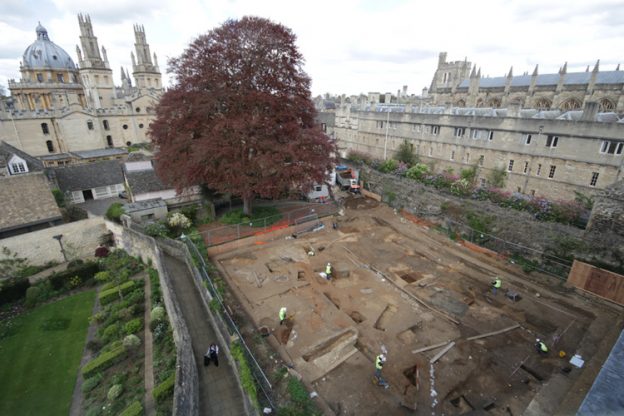On March 9th we were given a talk by David Radford the Oxford City Archaeologist on his work, with special reference to King Alfred the Great, and his possible connections to the founding of the city of Oxford in the Saxon period.
He explained that the legislation requiring developers to facilitate archaeological excavations on sensitive sites resulted in the need for this work to be monitored by the city Archaeologist. We were told that there were three possible candidates for the founding of Oxford, of whom Alfred was one, but also his son Edward the Elder and Aethelflaed his daughter.
The main focus of the talk was on the various excavations around the city to determine the location of the ramparts defining the boundaries of the early settlement. The best preserved section is near the North Gate and Ship Street. We were shown an interesting Henry Taunt photograph of an excavation on the site of the New Bodleian.
Many excavations took place in the grounds of Oxford colleges during the development of new buildings. These included Wadham, Queen’s, St John’s and Corpus Christi. Remains of the ramparts have also been found in the Castle quarter where evidence shows them leading towards the Tower. The pottery finds in various sites have been difficult to date with any
accuracy as there was no defining style or composition.
The biggest and most recent excavation has been of the Westgate area prior to its redevelopment. This has exposed the largest range of mediaeval buildings yet uncovered in the city, including the remains of a Franciscan priory.
It was shown that it is still quite difficult to determine the dating and location of the early beginnings of Oxford in the Saxon period, but there is still much to be learned from the finds on this extensive site.

